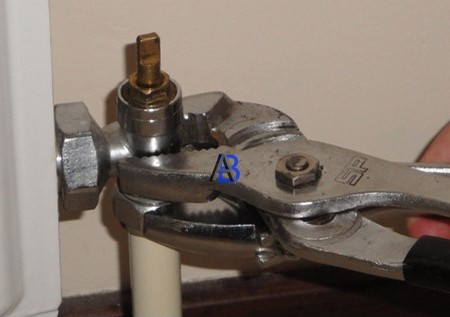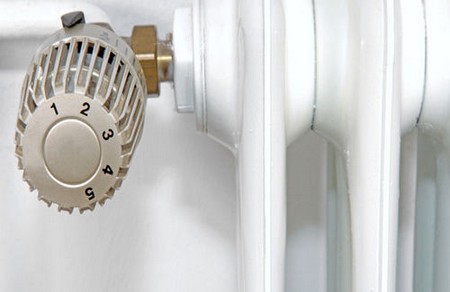In this age of striving for better use of energy, in an attempt to reduce greenhouse gases and save a nice few quid at the same time, try fitting thermostatic valves to your radiators, replacing the standard rad valves.
This gives you much more control over the temperature. It’s not necessary to fit thermostatic valves on all of the radiators, just in particular hot spots or hot rooms – the kitchen for example, which may already be hot. A thermostatic rad valve allows you to turn down the radiator temperature for that room alone without affecting other areas in the property. Used in conjunction with a room thermostat and an automatic timer, if you make a conscious effort, you can create an efficient heat control system, thereby saving money and helping out the ozone layer!
Drain down the system by firstly shutting down the boiler. Leave for a while to allow the water to cool, and then switch off the supply to the expansion tank via the stopcock. Next, slip one end of a length of garden hose over the drain cock, the other end into the gully. Open the drain cock with a key or adjustable spanner and release all the water. Any water trapped can be removed by opening the bleed valves on all the radiators, starting at the furthest from the drain cock. Pack some dry cloths around the pipe under the old valve. Hold the main body of the valve with a set of grips and, using an adjustable spanner, undo the radiator union nut. Apply the same method removing the cap nut from the bottom of the valve. Carefully lift off the old valve.
Removing the cap nut and olive could be tricky. If the olive is brass (yellowish) it can be removed with care, freeing the cap nut. A copper olive (same color as pipe) would have compressed onto the pipe when tightened so requires cutting the olive off with pipe cutters. Some thermostatic valves may be longer or shorter than the original, requiring some alteration to the pipe work.
Slide on the cap nut and then the new olive. Older valves might have different tails from new thermostatic valves, so it is important to compare the originals with the tail supplied with the new valve. If they are different, fit the new tail into the radiator by using a rad valve spanner (a large Alan key).
Don’t forget to wrap PTFE tape around the thread half a dozen times or so before fitting. Half-tighten the valve to the union first, then the cap nut. Once aligned, tighten the union first, then finish tightening the cap nut.
Originally, thermostatic valves had to be fitted on the radiator flow side (ingoing) but now modern thermostatic valves are bi-directional, which means, I suppose, that the water can flow both ways through the valve (that is, the valve can be fitted on either side of the radiator).
Categories
Advertisements
Recent Articles
 How to Understand Bed Sizes – A Small Guide
How to Understand Bed Sizes – A Small Guide How to Select Some Must Have Kitchen Accessories
How to Select Some Must Have Kitchen Accessories Best Way to Change a Car Tire
Best Way to Change a Car Tire Best Way to Write an Affirmation
Best Way to Write an Affirmation Best Way to Take Charge of Your Financial Life
Best Way to Take Charge of Your Financial Life Best Way to Survive a Party When You Don’t Know Anyone
Best Way to Survive a Party When You Don’t Know Anyone Best Way to Stop Self Sabotaging Yourself
Best Way to Stop Self Sabotaging Yourself Best Way to Start Journal Writing
Best Way to Start Journal Writing Best Way to Speak with a Powerful Voice
Best Way to Speak with a Powerful Voice Best Way to Simplify Your Life
Best Way to Simplify Your Life Best Way to Respond to a Put-Down
Best Way to Respond to a Put-Down Best Way to Reduce Acne Breakouts
Best Way to Reduce Acne Breakouts Best Way to Recover from Dining Disasters
Best Way to Recover from Dining Disasters Best Way to Quit Your Job Gracefully
Best Way to Quit Your Job Gracefully Best Way to Make Your Own Website
Best Way to Make Your Own Website



Leave a Reply